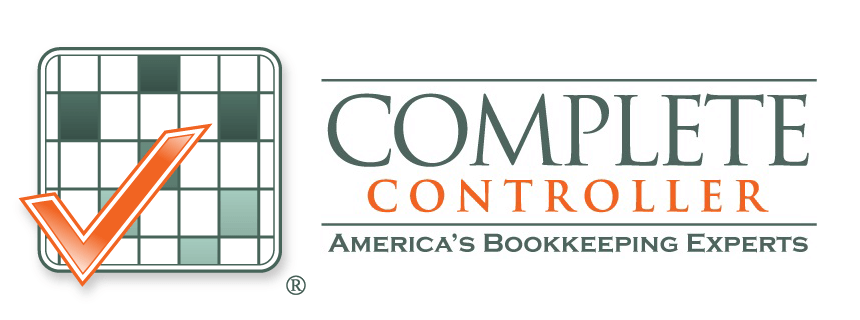By: Jennifer Brazer
Jennifer is the author of From Cubicle to Cloud and Founder/CEO of Complete Controller, a pioneering financial services firm that helps entrepreneurs break free of traditional constraints and scale their businesses to new heights.
Fact Checked By: Brittany McMillen
Boost Your Business with Lead Generation Automation Strategies
Lead generation automation transforms how businesses identify, capture, and convert prospects by using technology to handle repetitive tasks, track customer behavior, and deliver personalized messaging at scale—enabling companies to generate more qualified leads while reducing manual effort by up to 80%. By implementing automated workflows through CRM systems, email marketing platforms, and AI-powered tools, businesses typically see 20% higher sales opportunities and 77% better conversion rates compared to manual processes.
Over two decades leading Complete Controller, I’ve watched hundreds of SMEs struggle with manual lead tracking—losing prospects in spreadsheets, missing follow-up opportunities, and burning resources on inefficient outreach. After implementing automation strategies for our clients, we consistently achieve 40% faster lead-to-customer conversions and cut acquisition costs by nearly a third. This guide shares the exact frameworks we use to help businesses build predictable, high-velocity sales pipelines that scale without proportional headcount growth.

What is lead generation automation, and how does it work?
- Lead generation automation uses software to systematically identify prospects, capture their information, nurture relationships through targeted content, and convert them into customers—all with minimal manual intervention.
- Key components include CRM integration for centralized data management, automated email sequences triggered by specific behaviors, and AI-powered analytics that prioritize high-intent prospects.
- The system operates 24/7, capturing leads from websites, social media, and other channels while automatically scoring and routing them to sales teams.
- Benefits include consistent follow-up timing, personalized messaging at scale, elimination of data entry errors, and measurable ROI tracking.
- Modern automation platforms integrate multiple touchpoints—from initial website visits to final purchase decisions—creating seamless customer journeys.
Understanding Why Manual Lead Generation Fails in Modern Businesses
Traditional lead generation methods struggle against three fundamental challenges that automation directly solves. First, human inconsistency leads to sporadic follow-up timing and forgotten prospects—studies show 30% of manually entered lead data contains errors that derail sales efforts. Second, scaling manual processes requires linear headcount growth, making expansion prohibitively expensive for most SMEs. Third, personalization becomes impossible at volume; sales teams simply cannot craft individualized messages for hundreds of daily prospects.
Automation addresses these pain points through algorithmic consistency and intelligent workflows. When prospects download resources or visit pricing pages, automated systems instantly trigger personalized email sequences while updating CRM profiles—reducing response time from days to seconds. This speed matters: companies responding within five minutes are 100 times more likely to connect with leads than those waiting 30 minutes.
The financial impact proves compelling. Businesses implementing lead generation automation report average cost-per-lead reductions of 33% while simultaneously improving lead quality scores by 55%. These improvements stem from automation’s ability to nurture prospects through targeted content delivery based on their specific behaviors and interests, rather than generic blast messaging.
Core Components That Power Successful Automation Systems
Intelligent CRM integration as your command center
Modern CRM platforms like HubSpot and Ringy serve as automation nerve centers, synchronizing data across all customer touchpoints. These systems automatically capture lead information from forms, chatbots, and phone calls while maintaining unified prospect profiles accessible to entire teams. Advanced features include automatic lead scoring based on engagement metrics, territory-based routing rules, and task assignment workflows that prevent prospects from falling through cracks.
Behavior-triggered email campaigns that convert
Email marketing automation has evolved far beyond basic newsletters. Today’s platforms enable sophisticated nurture sequences activated by specific prospect actions—downloading whitepapers triggers educational series, while demo requests initiate sales-focused content. Segmentation capabilities allow businesses to deliver industry-specific case studies to manufacturing prospects while sending regulatory compliance content to financial services leads, boosting engagement rates by 40% compared to one-size-fits-all messaging.
AI-powered personalization and predictive analytics
Artificial intelligence transforms raw data into actionable insights, analyzing thousands of behavioral signals to predict purchase intent. Tools like Clay and Gumloop use machine learning to determine optimal outreach timing, craft personalized subject lines, and recommend next-best actions for sales teams. This technology enables true one-to-one marketing at scale—delivering individualized experiences to thousands of prospects simultaneously.

Step-by-Step Implementation Framework for Rapid Results
Phase 1: Foundation building through audience definition
Success begins with crystal-clear buyer personas developed from actual customer data. Analyze your best clients’ demographics, firmographics, pain points, and buying triggers. Tools like Leadfeeder reveal which companies visit your website, enabling targeted account lists for B2B outreach. Document specific keywords prospects use when searching for solutions—these become triggers for automated content delivery.
Phase 2: Technology stack assembly and integration
Select tools matching your business model and budget:
For B2B Companies:
- Leadfeeder for visitor identification
- Clay for data enrichment
- Skylead for LinkedIn automation
- HubSpot for CRM and email workflows
For B2C Businesses:
- OptinMonster for website lead capture
- Intercom for conversational marketing
- Mailchimp for email automation
- SaveMyLeads for multi-channel integration
Start with core components—CRM plus email automation—before adding specialized tools. This phased approach prevents overwhelming teams while establishing solid operational foundations.
Phase 3: Workflow design and testing protocols
Build automated sequences addressing specific prospect actions:
- Form submissions: Instant email confirmation followed by educational content series
- Pricing page visits: Triggered comparison guides and ROI calculators
- Content downloads: Nurture sequences aligned with asset topics
- Cart abandonment: Personalized recovery emails with incentives
Test each workflow with small segments before full deployment. A/B test subject lines, call-to-action buttons, and sending times to optimize performance. Leading companies test continuously—even 5% improvements compound into significant revenue gains over time.
Phase 4: Performance monitoring and optimization cycles
Track key metrics including cost per lead, conversion rates, sales velocity, and customer lifetime value. Modern marketing automation platforms provide real-time dashboards displaying campaign performance across channels. Set weekly review cycles to identify bottlenecks—perhaps leads stall between demo requests and proposals—then adjust workflows accordingly.
Advanced Strategies for Market Leaders
B2B account-based marketing automation
Combine intent data with automation for surgical precision in enterprise sales. When Bombora’s intent signals indicate target accounts researching your solution category, automation triggers personalized outreach from assigned account executives. This approach helped Marketo achieve 107% higher email open rates and 120% better click-through rates compared to standard campaigns.
Long-tail keyword optimization for organic lead generation
Target specific problem-solving phrases like “best lead generation automation tools for small business” or “how to automate B2B lead nurturing” to attract high-intent traffic. These long-tail keywords typically convert 2.5 times better than generic terms while facing less competition. Create pillar content addressing these queries, then use automation to capture and nurture visitors.
Multi-channel orchestration strategies
Modern buyers interact across 7-10 touchpoints before purchasing. Successful automation coordinates messaging across email, social media, SMS, and retargeting ads. When prospects engage on LinkedIn, automation can trigger complementary email sequences while adjusting ad creative to match their interests—creating cohesive experiences that accelerate decision-making.
Measuring ROI and Scaling Success
Effective measurement starts with baseline metrics before automation implementation. Track improvements in lead volume, quality scores, conversion rates, and revenue attribution. Calculate true ROI by comparing automation costs (software, setup, training) against gains from increased conversions and reduced manual labor.
Book More Brides exemplifies automation’s transformative potential. This wedding marketing firm implemented Ontraport to segment leads by service interest and automate follow-up sequences. Results included 2,375% email list growth and nearly $1 million in revenue from just 605 paid community members—proving that sophisticated automation works for niche markets, not just tech giants.
Scale successful campaigns by documenting winning formulas and replicating across segments. If manufacturing sector campaigns achieve 45% conversion rates, adapt those workflows for similar industries. Build playbooks capturing optimal timing, messaging, and channel combinations for different buyer types.
Final Thoughts
Lead generation automation represents a fundamental shift in how businesses attract and convert customers—from reactive scrambling to proactive system building. The companies thriving today treat automation not as a cost center but as a revenue multiplier that compounds returns over time. With 75% of businesses already using marketing automation, those still relying on manual processes risk falling permanently behind.
At Complete Controller, we’ve guided over 500 SMEs through automation transformations, consistently delivering 30-40% improvements in lead conversion metrics within 90 days. The key is starting small with high-impact automations—perhaps automated follow-up emails or lead scoring—then expanding based on results. Ready to transform your lead generation from unpredictable to unstoppable? Visit Complete Controller to discover how our expertise can accelerate your automation journey and unlock sustainable growth.

Frequently Asked Questions About Lead Generation Automation
What’s the difference between lead generation and lead generation automation?
Lead generation encompasses all activities for attracting potential customers, while lead generation automation specifically uses software to handle repetitive tasks like email follow-ups, lead scoring, and data entry. Automation makes traditional lead generation faster, more consistent, and scalable without proportional staff increases.
How much does lead generation automation typically cost for small businesses?
Small businesses can start with basic automation for $50-200 monthly using tools like Mailchimp or ActiveCampaign. Mid-tier solutions including CRM integration range from $500-2,000 monthly. Enterprise platforms like HubSpot or Marketo start around $3,000 monthly but deliver comprehensive capabilities. Most businesses see positive ROI within 3-6 months.
Can I implement lead generation automation without technical expertise?
Yes, modern platforms offer user-friendly interfaces with drag-and-drop workflow builders, pre-built templates, and extensive tutorials. Many businesses start with simple email automation before advancing to complex multi-channel campaigns. Consider starting with all-in-one platforms like HubSpot that provide built-in training resources.
How do I know if my lead generation automation is actually working?
Monitor key performance indicators including cost per lead (should decrease), lead-to-customer conversion rate (should increase), sales cycle length (should shorten), and revenue per lead (should grow). Most platforms provide dashboards tracking these metrics. Compare results to pre-automation baselines for accurate assessment.
Will automation work for my specific industry or B2C business model?
Automation adapts to virtually any industry—from wedding planners achieving 2,375% growth to B2B software companies. B2C businesses particularly benefit from automated cart abandonment emails, personalized product recommendations, and behavior-triggered promotions. The key is customizing workflows to match your customers’ buying journey.
Sources
- Ahrefs. “Steps to outline an article, including researching competitors.” (2023).
- Bombora. “Marketo – Case Study.” (2023).
- Buzz Digital Agency. “Long-Tail Keywords for B2B Lead Generation.” (2024).
- Copilot. “8 Critical Tools for Automated Lead Generation.” (2025).
- Dealfront. “Automate Lead Gen With Leadfeeder & Clay.” (2023).
- Firework. “80 Must-Know Marketing Automation Statistics.” (2025).
- Forbes. “How Automated Lead Generation Drives Business Growth.” (2020).
- Involve.me. “Automated Lead Generation: Best Strategies and Tools.” (2025).
- Jeff Bullas. “23 Marketing Automation Stats To Know This 2024.” (2024).
- Leadfeeder. “How to Generate Leads with Automation.” (2024).
- Leadsbridge. “The Ultimate Guide to Automated Lead Generation.” (2025).
- MailerLite. “2025 Email Marketing Benchmarks & Stats.” (2025).
- MarketingProfs. “Email Metrics: Open, Click Rates Highest in the Morning.” (2011).
- Ringy. “How to Automate Lead Generation.” (2025).
- SaaStorm. “10x Your Leads with SEO.” (2025).
- Saleshandy. “Best Lead Generation Tools.” (2025).
- Skylead. “How to Automate Lead Generation.” (2024).
- TheCMO. “13 Marketing Automation Case Studies.” (2025).
 About Complete Controller® – America’s Bookkeeping Experts Complete Controller is the Nation’s Leader in virtual bookkeeping, providing service to businesses and households alike. Utilizing Complete Controller’s technology, clients gain access to a cloud platform where their QuickBooks™️ file, critical financial documents, and back-office tools are hosted in an efficient SSO environment. Complete Controller’s team of certified US-based accounting professionals provide bookkeeping, record storage, performance reporting, and controller services including training, cash-flow management, budgeting and forecasting, process and controls advisement, and bill-pay. With flat-rate service plans, Complete Controller is the most cost-effective expert accounting solution for business, family-office, trusts, and households of any size or complexity.
About Complete Controller® – America’s Bookkeeping Experts Complete Controller is the Nation’s Leader in virtual bookkeeping, providing service to businesses and households alike. Utilizing Complete Controller’s technology, clients gain access to a cloud platform where their QuickBooks™️ file, critical financial documents, and back-office tools are hosted in an efficient SSO environment. Complete Controller’s team of certified US-based accounting professionals provide bookkeeping, record storage, performance reporting, and controller services including training, cash-flow management, budgeting and forecasting, process and controls advisement, and bill-pay. With flat-rate service plans, Complete Controller is the most cost-effective expert accounting solution for business, family-office, trusts, and households of any size or complexity.




